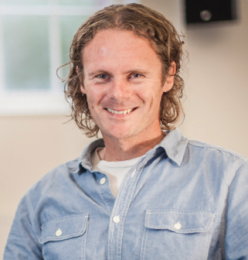 In recent years several churches have favoured becoming ‘multi-site’ or ‘multi-campus’ over growing a central congregation. This approach allows more flexibility to respond to the needs of a local community. Emmanuel Church in Brighton, formerly Church of Christ the King (CCK), was one of the first churches in the UK to adopt this model. Recently I had the opportunity to talk with one of the elders, Steve Boon, who played a significant part in his role as executive pastor in transitioning the church to this model.
In recent years several churches have favoured becoming ‘multi-site’ or ‘multi-campus’ over growing a central congregation. This approach allows more flexibility to respond to the needs of a local community. Emmanuel Church in Brighton, formerly Church of Christ the King (CCK), was one of the first churches in the UK to adopt this model. Recently I had the opportunity to talk with one of the elders, Steve Boon, who played a significant part in his role as executive pastor in transitioning the church to this model.

Nigel: Steve, how long has Emmanuel been running multi-sites?
Steve: We launched our first site in the Shoreham area in Autumn 2011, and then, four months later, a third site in the east of the city at the Racecourse. Two years on from there we launched our fourth venue in Hove.
Nigel: Does that mean you have four meetings on a Sunday?
Steve: One of the venues has three meetings – one of them being a Polish service – one of the sites has only one service, and two of the sites have two services, but they all have plans to go to extra services at some point.
Nigel: Do those services have a different flavour to them or is it just purely a convenience of time of day?
Steve: Both. Multi-site allows the site leader to contextualise to their locality. In some locations its very high density with young families and we’ve noticed many gravitate to a 9am service. In other venues the 11am is extremely popular, whilst the evening meeting venue gathers in part young 20’s and undergraduates.
Nigel: What are the key characteristics that define a multi-site church?
Steve: There are different models of multi-site church and therefore there isn’t one right model that you can take ‘off the peg’. But it must fit the leadership vision. For us, we have the strength of one eldership team. We also have a central staff who specialise in various areas, such as finance, legal, website communications, worship, kids work, and preaching that serve all the sites. So this in turn allows the site leaders to lead their site, pastor people, welcome new people in, and serve everyone in terms of their local needs with the added value and strength of the weight of more central resource as things they don’t need to worry about. They help shape it, but they don’t need to carry all the oversight, organisation or management for it. So these are important strengths in our particular multi-site model.
Nigel: Does this affect the way you carry out specific ministries?
Steve: In the City we work with homeless people and various other mercy ministries, really trying to serve people. We put a lot of effort, time, prayer and finance into these. Such ministries unify us as one church across all the sites whilst equally allowing each site to play its part in their local community.
Nigel: Are there things that are non-negotiable so that if they are not in place, for instance a common eldership, the church isn’t truly multi-site?
Steve: I guess it depends on the denominational way you land on it in the role of elders. Our model is that we would have one eldership team, currently with fifteen elders.
Nigel: How big is the church?
Steve: We have about 1300 in Brighton, but we are also a church planting church.
Next time we will look at some of the options for implementing a multi-site philosophy.
